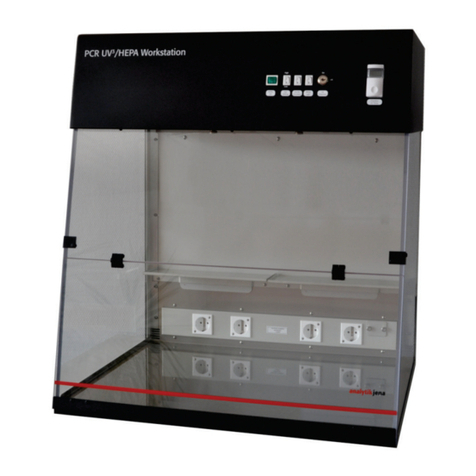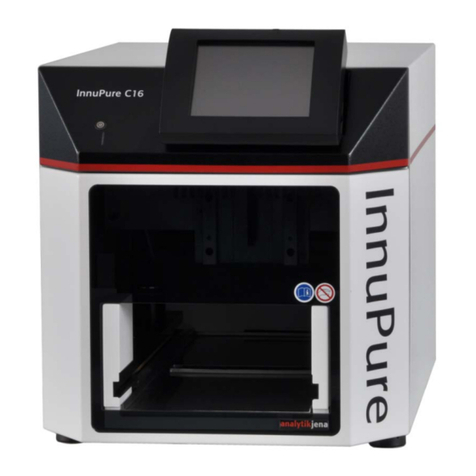
Table of contents
2 Issue 01/2014 contrAA 700
AS-F and AS-FD autosamplers.................................................................... 415.6.1
JUN-AIR 6/S piston compressor .................................................................. 425.6.2
SFS 6 injection module ................................................................................ 425.6.3
Scraper – Automatic burner head cleaner for nitrous oxide flame............... 435.6.4
HPT burner head .......................................................................................... 445.6.5
5.7 Supplementary accessories to Hg/hydride systems .................................... 44
6Installation and start-up.................................................................... 45
6.1 Utility supply and control terminals............................................................... 45
6.2 Installing and connecting the contrAA 700 ................................................... 47
6.3 Installation and start of ASpect CS software ................................................ 48
6.4 Graphite tube technique ............................................................................... 48
Terminals in sample compartment for graphite technique ........................... 486.4.1
Software presettings for graphite tube technique......................................... 506.4.2
Inserting the graphite tube into the graphite tube furnace............................ 516.4.3
Graphite tube formatting............................................................................... 526.4.4
Cleaning the graphite tube / cleanout........................................................... 536.4.5
6.5 Completing and installing the AS-GF autosampler ...................................... 54
Installing AS-GF ........................................................................................... 546.5.1
Adjusting the AS-GF..................................................................................... 566.5.2
Uninstalling the autosampler AS-GF ............................................................ 586.5.3
6.6 Flame technique ........................................................................................... 59
Flame technique terminals in sample compartment..................................... 596.6.1
Software presettings for flame technique ..................................................... 606.6.2
Installation for manual sample feeding......................................................... 606.6.3
Installation for continuous operation mode / with samples delivered by6.6.4
autosampler.................................................................................................. 63
Uninstalling the autosampler AS-F/AS-FD ................................................... 666.6.5
Installation of SFS 6 injection module .......................................................... 666.6.6
Replacement of burner ................................................................................. 676.6.7
Add-on installation of scraper....................................................................... 676.6.8
Operation of the HPT burner head ............................................................... 696.6.9
6.7 Starting the contrAA 700 with accessory units up........................................ 69
Turn-on sequence, daily start of work .......................................................... 696.7.1
Turn off sequence......................................................................................... 706.7.2
7Care and maintenance ...................................................................... 71
7.1 Maintenance summary table ........................................................................ 71
7.2 Basic system unit.......................................................................................... 73
Fuse change................................................................................................. 737.2.1
Reactivating the safety circuits of the cooling water circuit .......................... 737.2.2
Cleaning the sample compartments............................................................. 747.2.3
Removing and installing the xenon lamp...................................................... 757.2.4
Check cooling water level............................................................................. 767.2.5






























